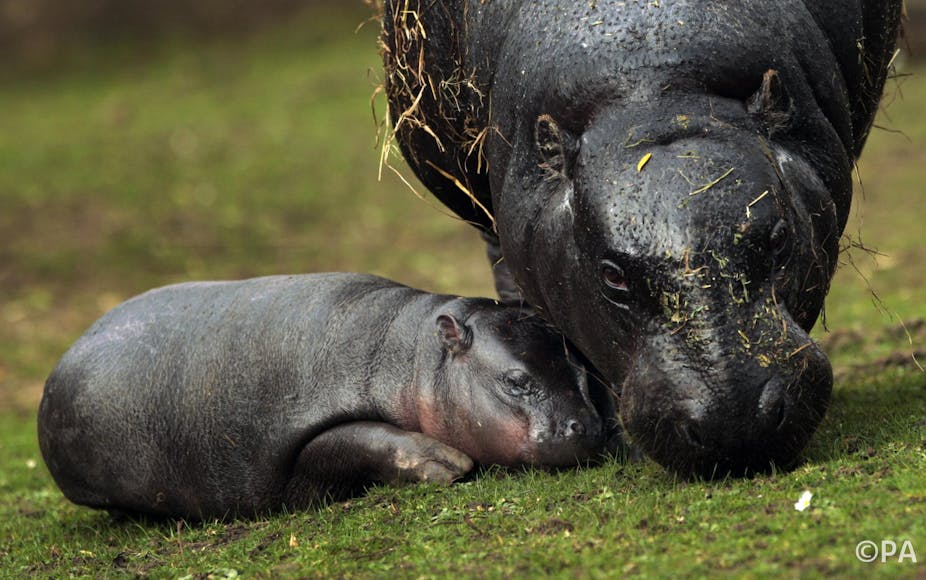Mammals display an incredible diversity in size. The largest mammal, the blue whale, can grow up to 30m long and weigh up to 200 tonnes. Now compare that to the Bumblebee bat, which is 3cm long and weighs in at only 2g.
To put these figures into perspective: 30m is as tall as the ten-story Instacon building that was recently built in India; 200 tonnes is the weight of a 747 airliner; and a banknote can weigh 1g.
Size matters
So how does a blue whale “know” to be that big? And why don’t we have tiny hippos or enormous mice? And what can size control in mammals tell us about cancer and regenerative medicine?
The organs of animals are proportional to body size. The blue whale’s heart weighs 600kg and is the size of a small car while our lungs fit perfectly within our chest.

But if you compare cells taken from a whale and a miniature bat, they are the same size. We know then that the size of an animal is controlled by the number of cells in each tissue. And it’s the balance between cell growth and cell death that controls when an organ stops growing.
As cancer is caused by uncontrolled growth of cells, a better understanding of how cells decide to grow or die has important ramifications for health and disease.
The Hippo pathway
It has only been in recent years that the molecular and cellular pathways that control organ size have been studied. It has been known for many years that when cells grow in a test tube, they stop dividing when they come in contact with other cells.
This “cell-contact” mechanism mediates growth and is defective in cancer cells, which continue to grow even when they are extremely crowded.
In many animals, including flies, mice and humans, tissue overgrowth is triggered by faulty signalling systems. One of these signalling systems was recently identified and called the Hippo pathway, a tongue-in-cheek nod to the size of hippos.
Mutations in this pathway lead to a massive increase in organ size because of uncontrolled growth of cells. There is now an explosion of research into how the Hippo pathway is regulated in normal tissue, as well as during cancer. But our new study, published last week in Developmental Cell, identifies a novel mechanism that controls this pathway.
The Hippo pathway is activated by contact with cells. When that happens, chemical signals within the cell cause a protein called Yap - or Yes-associated protein - to be switched off. The Yap protein causes cells to recognise that it’s time to stop dividing but if the signalling system is faulty, Yap isn’t inactivated and tissue and organs continue to grow.
We’ve seen it in flies or mice that lack the ability to inactivate Yap - cells continue to grow, leading to larger organs and ultimately cancer.
Using proteins to send messages
Signalling pathways use several proteins in the body to pass along a message from outside the cell into the nucleus of the cell, which changes the way the cell behaves. How proteins pass along this signal varies depending on what the ultimate message is.

A common way the body creates different messages is by using chemicals to modify proteins, which then affects their ability to interact with the next link in the chain.
For the Hippo pathway and inhibiting cell growth, it’s the addition of a phosphate group of chemicals on the Yap protein that inactivates it. Our results also identify that an additional chemical modification - methylation - controls how Yap works - and ultimately the way the Hippo pathway works.
When we began this project, our focus wasn’t turned towards this signalling system but on the role of an enzyme called Set7. But differences we saw in the structure of the gut in the mice we studied and the publication of the another study into the characteristics of mice that had a mutation in their Hippo pathway, led to a series of experiments also linking Set7 and a role in inhibiting Yap - and therefore cell growth.
Cancer drugs
The ramifications of our findings are diverse. Our findings suggest that drugs that can block Set7’s function could result in more cell growth, which could improve regenerative processes such as tissue repair in people who have suffered damage.
But activation of Set7 could potentially increase the inhibition of Yap and thereby slow cell growth, creating a potential new cancer therapy.
We have yet to work out whether manipulation of Set7 during foetal development would have any drastic effect on tissue size - allowing us to create giant bumblebee bats for example. Or whether Set7 works differently in small or large animals. And for now, we still have very little understanding of all of the intricacies of this exciting Hippo pathway.
So unfortunately it will still be a while until house hippos are a reality.

